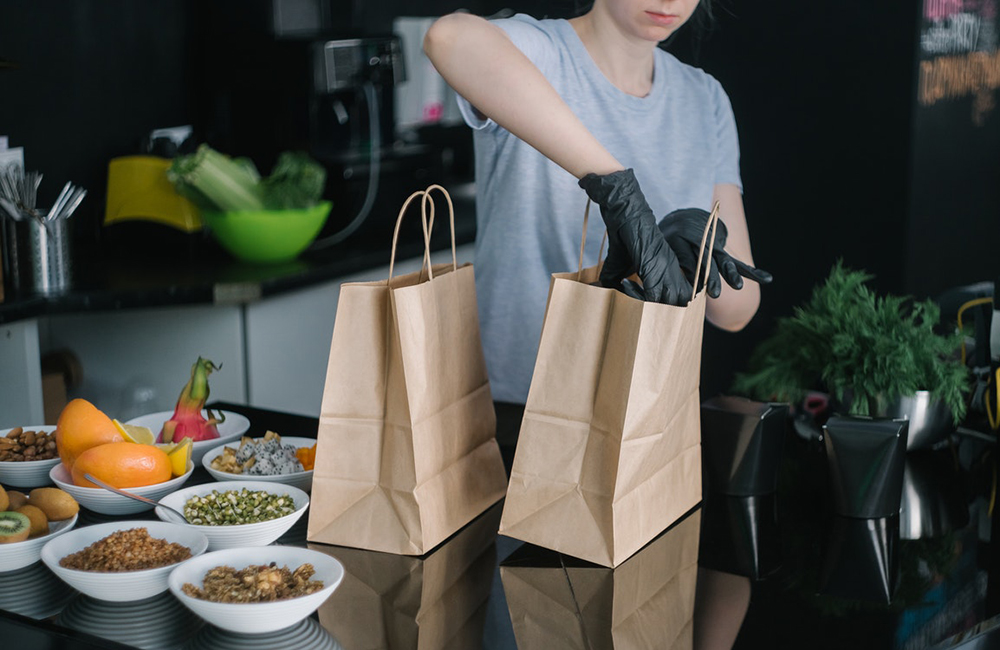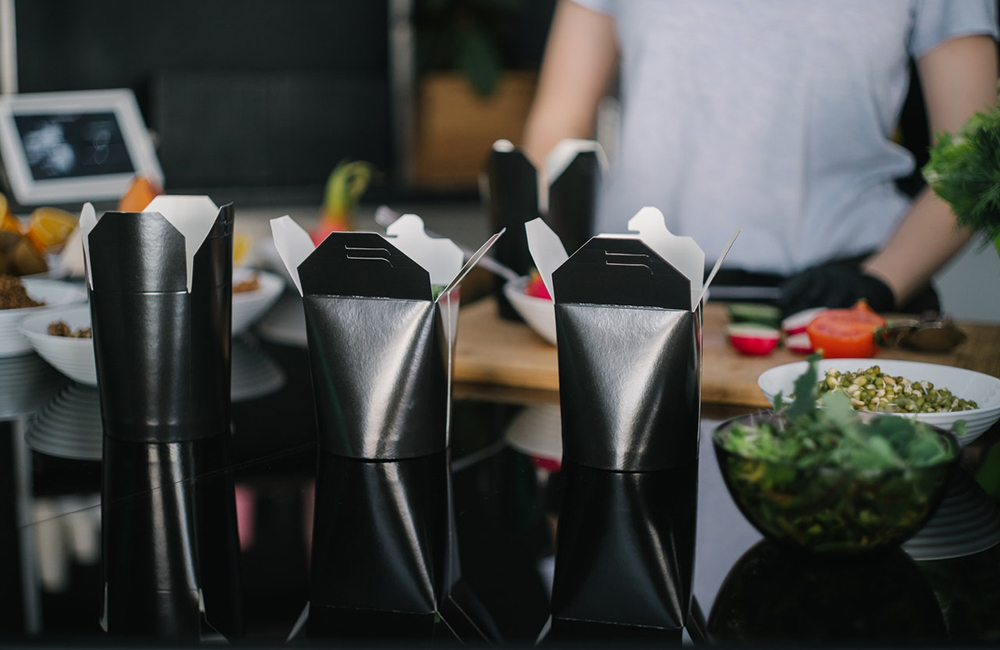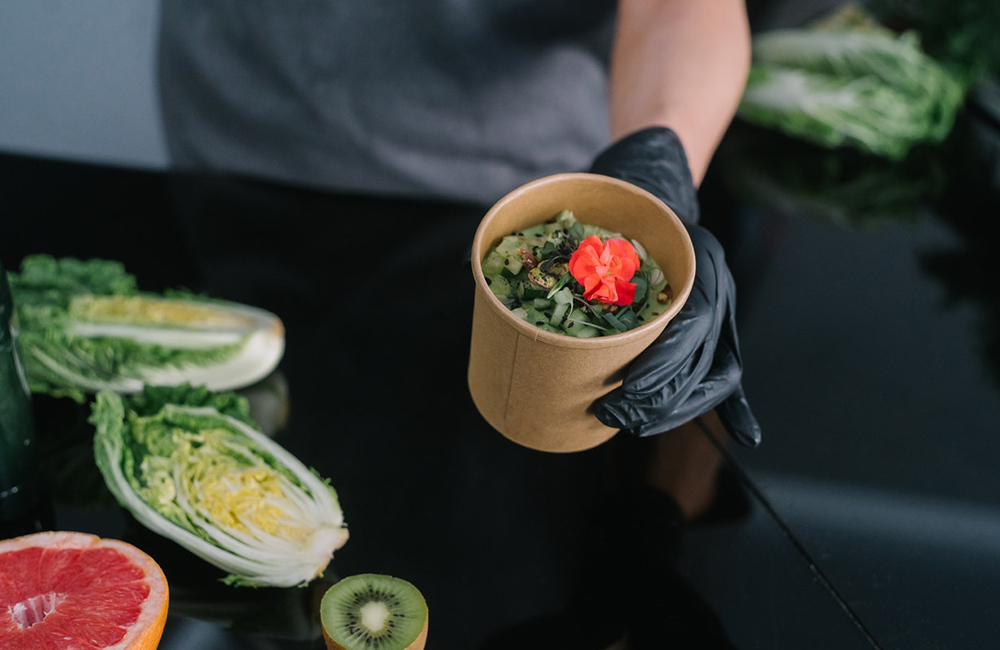Restaurants doing takeaway during lockdown is what helped many of your favorite establishments stay afloat. When indoor dining was permitted, foodservice establishments were limited in seating capacity. Some restaurant managers believe that there will be a shift in the restaurant industry where people continue to opt for delivery.
Ghost kitchens have risen out of the pandemic, allowing many savvy restaurateurs to start something a little different.

What are Ghost Kitchens?
Ghost kitchen startups in the US are on the rise, as COVID-19 changed the very habits of restaurant-goers in the United States. If you've never heard of the term ghost kitchens before, these are restaurants without a brick-and-mortar location.
The brand is real. The food is real. But there's no local place to go and sit down.
While the concept may have started in Los Angeles, we're now starting to see ghost kitchens in NY and all across the country.
How Do Ghost Kitchens Work?
As virtual brands, these kitchens leverage delivery apps and online sales for all of their sales. Customers cannot come and sit down to eat in the restaurant, and the overhead is much less. Restaurant owners don't need to worry about wait staff or decoration bills.
Delivery restaurants require lower startup costs and are great in larger cities because there are a lot of people that prefer at-home dining.
A lot of restaurants and even food trucks are starting up new, online-only kitchens. Why? Food waste remains rather high for a lot of restaurants. Instead of wasting food, a new, hip restaurant is created and uses ingredients that were likely going to be discarded.
Operating a Ghost Kitchen: Looking at the Internals
Since you don't own a brick-and-mortar business, you'll need to rent out a facility where all of the food can be prepared and cooked while meeting the highest quality standards. The kitchen is the first step in the process.
The second step is to use a third party, companies that specialize in delivery, to start promoting your business. Since these major apps and platforms have a wide customer base, you can leverage their platform to bring in customers.
GrubHub, UberEats, Doordash, or any delivery service you're using will then come to the kitchen, pick up the food and deliver it to the people that order.
Your main worry is the food preparation.
A ghost kitchen works very well for new businesses, but when it comes to an existing restaurant, it can be a hit or miss. The main deciding factor of success seems to be the brand's strength.
Why?
Some people only go to certain restaurants for the dine-in experience. People become accustomed to being greeted by the owner and know the waitresses. The ambiance can be almost as appealing as the food.
In this case, people may still not order.
But with a very strong brand, people will often order from a ghost kitchen without even realizing it. You can greatly expand your brand, if it's strong enough, by creating a ghost kitchen and expanding to new areas.

What Gap Does a Ghost Kitchen Fill?
If you haven't noticed, restaurant food delivery has exploded. The pandemic changed the "norm" when it comes to the way people eat. Patrons still wanted the restaurant experience, and with indoor dining closed, there were three main options:
- Close and wait for things to settle down
- Offer restaurant takeout delivery
- Offer curbside pickup
And for over a year now, people became accustomed to restaurant delivery during COVID. There's something nice about ordering from your favorite restaurant and having the food delivered to your door.
Entrepreneurs and chefs are jumping at the opportunity to open ghost kitchens because they know a lot of people will continue to order delivery.
Even if profits aren't as high as a brick-and-mortar location, ghost kitchens try to make delivering a profitable venture. There are certainly a lot of issues with delivery apps because profit margins are already low for many entrГ©e items.
Delivery apps eat into these profits, but with much less overhead, ghost kitchens may be viable. Since the concept is relatively new, it's still uncertain what the long-term viability of ghost kitchens may be.
What Are Virtual Restaurants?
You may have heard of the phrase "virtual restaurants". They're different than a ghost kitchen, although a lot of people confuse the two or use the term interchangeably. These restaurants may have their own physical store locations, but they often rent out a kitchen or co-space.
An established restaurant may also have a menu that is exclusive to deliveries.
Businesses are turning to restaurant delivery to generate more sales. Oftentimes, this is an offshoot of the main restaurant and is a way to offer a very popular item or menu items for delivery only.
The goal is to cater to dine-in and delivery customers, and the virtual restaurant does this perfectly.

How Do Virtual Restaurants Work?
Restaurant delivery during quarantine led many restaurants to open a virtual restaurant. These restaurants may have their own brick-and-mortar location and will use this same location to prepare the food, or they may rent space for the venture.
A food truck may also be the main location.
What's the main difference between how a virtual restaurant and a ghost kitchen work? A virtual restaurant owner is often, but not always, renting or owns a kitchen, so they're not incurring the additional expense involved with a ghost kitchen.
Effectively, virtual restaurants allow you to extend your brand.
Wrapping Up
Ghost kitchens, in today's world, seem to be a very viable option with low overhead, fast opening times, and convenience. Restaurants can use ghost kitchens to generate additional revenue, too.
But ghost kitchens also have brand awareness challenges and low customer experience, which will not appeal to all restaurant-goers.
The pandemic has led to a lot of new realities in the business world. Restaurants will need to offer takeout, curbside pickup, and delivery options to remain competitive. Ghost kitchens and virtual restaurants are part of the new realities that all restaurant owners need to face in 2021 and beyond.


